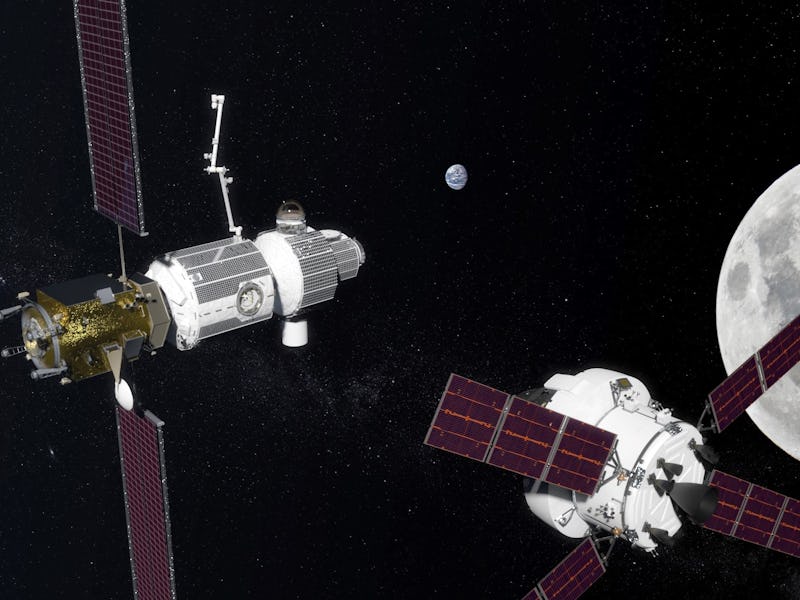Lockheed Martin Unveils Image of the “RV in Space” It Wants to Build for NASA
One of the largest defense companies wants to build a hippie van.

In partnership with NASA, Lockheed Martin is developing a deep space habitat that will park itself on a surface such as Mars or the moon and house up to four astronauts. The aerospace company offered a first glimpse of the massive cylindrical habitat, which looks excellent for a camping trip to space.
Lockheed is just one of the six private companies that entered a $65 million contract with NASA to build a deep space habitat prototype in 2018. Lockheed, as well as Boeing, Sierra Nevada Corp.’s Space Systems, Orbital ATK, NanoRacks, and Bigelow Aerospace, must each develop a prototype that facilitates living in deep space and submit an individual proposal to NASA. On Thursday, Lockheed offered a first look at the prototype at the Kennedy Space Center, revealing a spacecraft that offers a cozy-little-bungalow atmosphere.
Rendering of the Space RV
“You think of it as an RV in deep space,” Program Manager Bill Pratt said at the presentation. “When you’re in an RV, your table becomes your bed and things are always moving around, so you have to be really efficient with the space. That’s a lot of what we are testing here.”
At 22 feet long and 15 feet in diameter, it really does look like something meant for camping. The space bus (not to be confused with the Magic School Bus, though roughly the same size) is based on an earlier design for the Donatello Multi-Purpose Logistics Module, a cargo spacecraft that was intended to deliver supplies to the International Space Station but was never used. Lockheed’s version will also be carrying life support systems, exercise machines, sleep stations, and other perks for the astronauts when they aren’t working in its lab.
If approved, the final version of the space RV will hitch a ride on the Deep Space Gateway while it orbits the moon. While the spaceport serves as a jumping-off point for deep space explorations, the crew members would launch separately on the Orion spacecraft before picking up the keys to the cosmic RV.
“We want to get to the moon and to Mars as quickly as possible, and we feel like we actually have a lot of stuff that we can use to do that,” Pratt said. Considering much of Lockheed Martin’s products deal with electronic warfare systems and combat aircraft, it seems ironic that the company has proposed a vehicle it compares to a hippie van, but it may have to do with NASA’s ongoing strategy to help astronauts chill out when they’re far out.